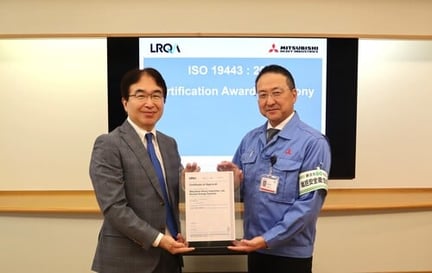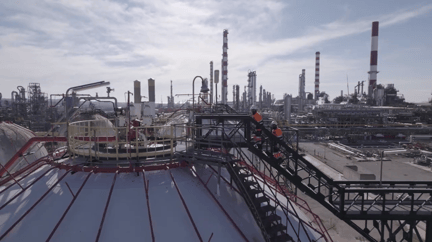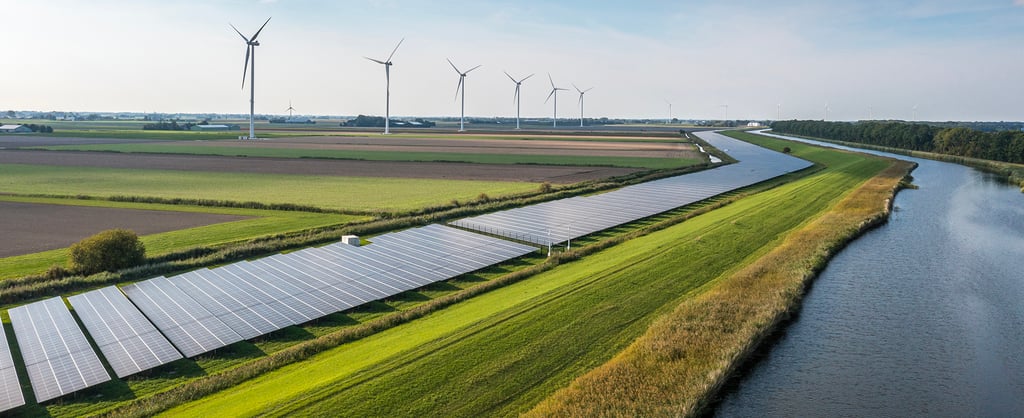To mark European Week for Safety & Health at Work, some of our leading voices on OH&S share their insight on the biggest risks and the best practices they’ve seen when it comes to managing dangerous substances in the workplace.
Steve Williams, System and Governance Manager
Often it is failing to understand the risks that leads to incidents and results in harm being caused. If you don’t appreciate the risks of what you are handling then the chances are you won’t know what to do if an incident occurs.
The best way to manage the risk is to look at why you need to use a dangerous substance: Can you eliminate its use by changing the way that a process is done? Is there a safer option that could be substituted into the process? Can you eliminate the interface between the workers and the substance to minimise exposure? This is what the organisations with good OH&S practices routinely do.
Having an OH&S management system requires you to identify the risks associated with such substances and to put in place solutions to eliminate or reduce the risks. With ISO 45001 this means utilising the hierarchy of controls to look at ways to eliminate the use of the substance or substitute a safer alternative, before considering what else could be done to make workers safe.
Wayne Roden, UK & I Trainer Manager and Lead Assessor
Having assessed some particularly hazardous industries, I have seen some quite considerable sources of risk including the management of explosives, the management of radioactive substances and chemicals addressed by REACH authorisation.
One of the biggest risks I’ve seen relates to the two substances I hate the most – hydrofluoric acid and the perchloric acid. Both acids are used in metal treatment and both offer their own issues. Hydrofluoric acid exposure to the skin can result in burns, decalcification of bones, and in worst cases, cardiac arrest, with the entry point from exposure not always being easily identifiable until a period of hours has elapsed. Perchloric acid offers some very different hazards, being a very powerful oxidizer, it reacts with organics and readily forms explosive compounds.
The best practice I have seen is the elimination of chemicals through the re-engineering of processes, and clearly reflects the hierarchy of control that is evident in ISO 45001, as it was also in OHSAS 18001. However, in some cases the move towards the higher end of the hierarchy, using elimination or substitution is not always possible. I have seen innovative approaches to reduce the risk including sealed systems, but the best approach is always that of a proactive culture for health and safety – where each individual is clearly aware of the risks associated to the hazards they encounter, and follow safe practices without deviation, while watching their colleagues backs too.
The best approach is always that of a proactive culture for health and safety – where each individual is clearly aware of the risks associated to the hazards they encounter.
Every client that I have ever worked with that has an occupational health and safety management system has told me how the plan-do-check-act approach has had nothing but a positive impact on their management of risk. This has only been strengthened by the preventive approach found in ISO 45001 both from the context approach, and the proactive management of change. ISO 45001 (and OHSAS 18001) require clients to understand the risks to the business and implement appropriate controls to manage the risk, whilst also continually improving the occupational health and safety performance. This can only help to support organisations to protect all the interested parties through having robust systems of internal control.
Alberto Melis, Technical Manager, Italy
The biggest risks that I’ve seen relating to dangerous substances in the workplace have come from poor storage of chemicals – for example, chemicals stored in inappropriate areas or containers; incompatible chemicals stored together causing fire or explosion; and damaged packaging leading to physical exposure, fumes and spills.
Good planning and preparation is vital. Training helps everyone to know how to stay safe and what to do in the event of an incident. Scheduled maintenance and inspection, thorough housekeeping and cleaning procedures, and a well-practiced emergency plan are all best practices that seem obvious, but have a big impact.
Scheduled maintenance and inspection, thorough cleaning procedures, and a well-practiced emergency plan are all best practices that seem obvious, but have a big impact.
An OH&S management system, based on ISO 45001, gives organisations a systematic approach to the management of hazardous substances from the identification of substances and related risks (clause 6.1.2), implementation of control measures (clause 8.1), and improvement (clause 10.1).
Panagiotis Kamarados, Technical Manager, South East Europe
One of my clients identified asbestos in the insulation of its ships. Once the sample had been analysed in a lab, the material was removed using the correct procedures and personal protective equipment – eliminating the issue.
Another client identified the risk of toxic and flammable gases in enclosed spaces. They addressed this by using systems to monitor the atmosphere within the enclosed space permanently and an alarm that sounded if the level went above the permitted limit. Workers also used portable gas detectors before entering the area and completed a checklist for entering the enclosed space to ensure all the preventive measures were taken.
I cannot think of a better way to improve Health and Safety than by establishing an effective Management System that promotes H&S culture across the organisation, ensures that H&S hazards and risks are identified and that measures and controls are implemented in a systematic way.
To find out more about European Week for Safety and Health at Work and join the conversation on social media using #EUhealthyworkplaces #DangerousSubstances
LRQA has a wealth of resources to meet your organisations’ challenges in workplace health and safety, including a range of ISO 45001:2018 assessment and training options to help you get the most from your OH&S management system.












